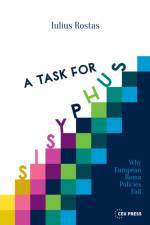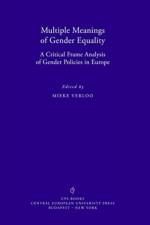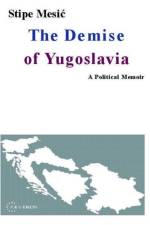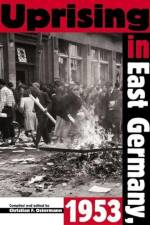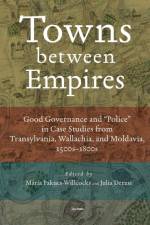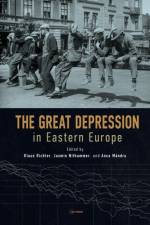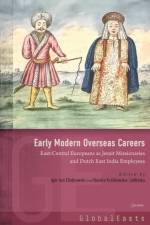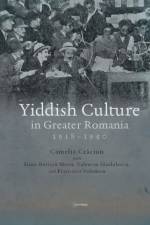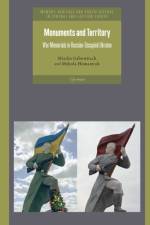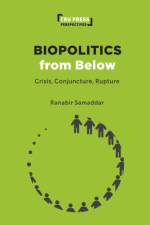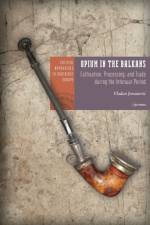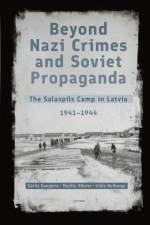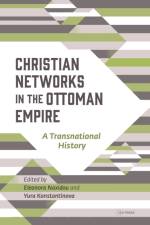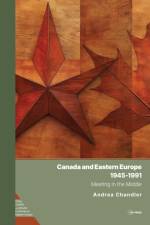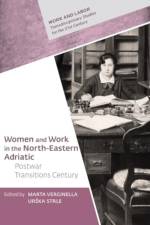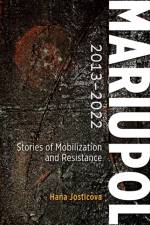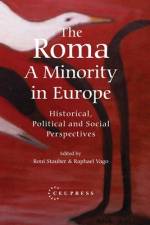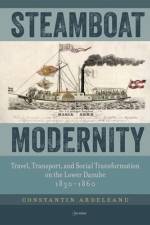Bøger udgivet af Central European University Press
-
- Why Europe's Roma Policies Fail
834,95 kr. Despite an increase in the number of EU and government initiatives in their favor, the situation of Roma in Europe has only worsened.
- Bog
- 834,95 kr.
-
511,95 kr. - Bog
- 511,95 kr.
-
1.493,95 kr. - Bog
- 1.493,95 kr.
-
1.637,95 kr. - Bog
- 1.637,95 kr.
-
1.172,95 kr. - Bog
- 1.172,95 kr.
-
1.348,95 kr. - Bog
- 1.348,95 kr.
-
1.172,95 kr. - Bog
- 1.172,95 kr.
-
151,95 kr. The memoirs of the Polish-Jewish writer, physician and humanitarian aid activist, Alina Margolis-Edelman (1922-2008), presents the life of its author from her childhood in Lódz, Poland till the end of the World War II. Soon after the beginning of the war her father was shot by the Gestapo, and her mother moved to Warsaw Ghetto with Alina and her younger brother. Alina enrolled in the Jewish School of Nursing and worked as a nurse and a courier for the Resistance movement. In a rescue action she describes in the book, she saved the life of Marek Edelman - one of the leaders of the Ghetto Uprising (1943), and he later became her husband. The stories told in her book illuminate issues of anti-Semitism, Holocaust, and Jewish resistance to oppression. She writes about solidarity in times of great danger, resilience in dire situations, dignity of love and care.
- Bog
- 151,95 kr.
-
1.096,95 kr. In the early modern period, two European networks, the Society of Jesus and the Dutch East India Company (VOC) spanned the globe and contributed to its multifaceted globalization. This book focuses on the members of the former, Jesuit missionaries, and the employees of the Dutch trading firm originating from Central and Eastern Europe. The well-chosen case studies examine the group characteristics, career influences, and narratives of these Central Eastern Europeans. They explore the question of why subjects of Polish kings, Transylvanian princes, or Habsburg emperors dreamed of venturing overseas with the colonial merchants or aspired to work as missionaries in China and Japan. The book examines the complexities of this early modern globalization: its scope, limits, importance, social, ethnic, and political ramifications. It researches how these networks reached out to the region of Central and Eastern Europe. The authors argue that the region was hardly considered peripheral from the perspective of Rome (and the Jesuits) or the Netherlands (and the colonial traders). They do, however, explore whether there were "glass ceilings," or limits of reach within the two networks for individuals from the Polish-Lithuanian Commonwealth or the Kingdom of Hungary.
- Bog
- 1.096,95 kr.
-
1.202,95 kr. - Bog
- 1.202,95 kr.
-
681,95 kr. Yiddish culture was an important part of the cultural landscape of Eastern Europe from the Baltic Sea to the Danube, connecting the scattered Ashkenazi Jewry, the overwhelming majority of the Jews living in this geographical area.In the newly created Greater Romania, the Jewish component included more than half a million individuals still speaking Yiddish. Building on pre-war trends, the new nation-state faced an antisemitism problem since its inception. This continued in the period that followed, culminating in the horrors of the Holocaust, which destroyed most of the Yiddish-language community. Most survivors were discouraged from continuing to use a language that reminded them of a painful past. This volume examines the socio-cultural mechanisms responsible for restructuring the Yiddish cultural life after the changes brought about by the end of World War I and the creation of Greater Romania. It describes how this process evolved until the political regimes banned the activity of Yiddish theaters, press and, ultimately, the usage of Yiddish, thus making cultural life impossible.The four authors identify the main institutions, individuals and projects that promoted Yiddish cultural life in interwar Romania. They also trace the impact of Yiddish within Romanian society through joint projects, events, and initiatives. Special attention is given to Yiddish theater, which played a key role both within the community and in its interaction with the Romanian-speaking public.
- Bog
- 681,95 kr.
-
566,95 kr. From the very first weeks of Russia's large-scale attack on Ukraine in February 2022, Russian soldiers, politicians, and proxy administrators expended considerable effort interacting with monuments on newly occupied territory. Why did the invaders care enough about war memorials to divert scarce resources to destroying, maintaining, or building them amid a massive war? Why did they remove some memorials and spare others? What was the point of commemorating past victories and defeats while bombing Ukrainian cities, and how did commemorative ceremonies in the occupied territorieschange over the first year of the war? What was the broader impact of monument-related practices beyond the local settings in which they occurred? And what does the Ukrainian case teach us more generally about how memorials to past wars can be used to justify new conquests? These are some of the questions this book explores, based on fieldwork in occupied Ukraine and online research.
- Bog
- 566,95 kr.
-
392,95 kr. The current social turmoil enveloping the world has produced knee jerk reactions and a plethora of policy declarations. At the same time, the scenario is marked with response of those with low socioeconomic status to the worldwide chaos and precarious living conditions. In this context, how do we make sense of what is being described variously as a breakdown of democracy, its exhaustion, and the new challenges in the form of an alternative politics of life or a phenomenon that we may term as "biopolitics from below"?The theme of the book is crisis, conjuncture, and rupture. It relates to the question of correlation of social and political forces in the emergence of certain events, presents certain events as illustrations, and takes a historiographical-analytical route to argue why certain things happen in the way they happen. Usually, crisis is the explanatory factor. This book seeks to go deeper and find out why some crises and not all produce unexpected outcomes. Or, as this book puts it differently, the essential gradient of a crisis is the correlation of forces at a particular time - and thus the question of conjuncture. The book seeks to open up to new adventures in thought, imagining new openings, and creating exits from the situation we find ourselves in.
- Bog
- 392,95 kr.
-
566,95 kr. - Bog
- 566,95 kr.
-
733,95 kr. Macedonian raw opium was a highly sought-after pharmaceutical raw material. This book focuses on its cultivation and production, and the trafficking of opium-based narcotics. Vladan Jovanovic offers fresh insight into a neglected and marginalized subject, tracing and contextualizing both the licit and the illicit processing and trade of opium alkaloids from the Western Balkans through Turkey, and on to the rest of the world between the two World Wars. His approach is to explore the subject both from the top down, involving the League of Nations and politicians and diplomats, as well as from the bottom up, through the analysis of the activities of smugglers, police, and ordinary people who partipated in the production and distribution of opium. The author describes the process of relocating the illegal processing industry from Turkey and Bulgaria to Yugoslavia. He insightfully shows the implicit continuity of relations between the former Ottoman Empire and the newly constituted Yugoslav state in the form of bilateral political agreements. He pays special attention to the illegal activities within the legal pharmaceutical industry and also exposes the role of criminal networks, which he situates in the appropriate political and social context. The exploration of this sensitive historical subject extends to other Balkan countries, along with Turkey, Western Europe, and the United States.
- Bog
- 733,95 kr.
-
730,95 kr. The Salaspils camp near Riga, which was operated during the Nazi occupation of Latvia, has long been the subject ofcontrovery. Around 23,000 people were imprisoned there: half were political prisoners, labor resisters and convicted soldiers, the rest prisoners from special operations against civilians in Belarus, Russia and the Latgale region of Latvia. The death toll in the camp, including the number of Jews who died during construction, is well over 3,000 people. Despite the relatively small size of this camp, it became a model for Russian remembrance policy. Soviet propaganda claimed that up to 100,000 prisoners were killed there, charged that children were used to extract blood, and greatly exaggerated the extent of the persecution of imprisoned lawbreakers and political dissidents . Salaspils became a myth in Russian-speaking society in Latvia that served to reinforce Soviet narratives of the "Great Patriotic War."The three authors drew on sources from the archives of Latvia, Germany and Russia and critically analyzed oral testimonies and earlier research to create a comprehensive account of the Salaspils camp in Nazi-occupied Latvia. Their book furthers the understanding of processes of deformation of collective memory and the techniques of memory politics from the Cold War to the present.
- Bog
- 730,95 kr.
-
766,95 kr. Observers and historians continue to marvel at the diversity and complexity of the Ottoman Empire. This book explores the significant and multifaceted role that Orthodox Christian networks played in the sultan's realm from the 17th century until WWI. These multi-ethnic, multi-lingual, and multi-confessional formations contributed fundamentally to the political, economic, social, and cultural development of the Empire as well as to its gradual disintegration.Bringing together scholars from most Balkan countries, Christian Networks in the Ottoman Empire describes the variety of Orthodox Christian networks under Ottoman rule. The examples examined include commercial relations, intellectual networks, educational systems, religious dynamics, consular activities, and revolutionary movements, and involve Muslims and Christians, Romanians and Serbs, Bulgarians and Greeks, Albanians and Turks. The contributions show that the Christian populations and their elites were an integral part of Ottoman society.The geographical spread of the formal and informal networks enriches our understanding of the terms 'center' and 'periphery.' They were either centered within the official Ottoman borders and extended their activities to other states and empires, or vice versa, located elsewhere, but also active in the Ottoman Empire. A common feature of these formations is their constant fluctuation, which enables a dynamic understanding of Ottoman history.
- Bog
- 766,95 kr.
-
228,95 kr. Brazil has experienced a political crisis over the last decade, starting with massive street demonstrations in 2013and culminating with the invasion of the presidential palace in January 2023. The outcry against corruption became a call for policy without politics, politicians should be replaced by operators free of any ideology.The authors of this book review some of the major debates in Brazil's recent past. They note that democracy is hostage to a serious conflict between the bureaucrats of the state's technocracy and the citizenry, represented by political animals, mainly parliamentarians, but also civil society activists. Abramovay and Lotta argue that the tension between a strong, independent bureaucracy and the natural conflicts of democracy - with the broad participation of students, workers, indigenous peoples and other forces that are the lifeblood of democracy - is the key to building a healthy and effective regime. If in 1979 it was about the fight against dictatorship, today, according to the book, it is about ensuring that the state achieves the goals of the constitution, such as building a free, fair and caring society. According to the two political scientists, this effort involves ceasing to demonize politics and realizing that civil servants are not necessarily the bearers of all virtues.
- Bog
- 228,95 kr.
-
643,95 kr. How democratic regimes should engage with authoritarian regimes, or self-proclaimed authorities in states under occupation, has long been a subject of debate. The work examines Canada's relations with member-states of the Warsaw Pact during the Cold War. Central and East European communist states were nominally independent but established under occupation. Canadian leaders explored whether engaging in foreign relations with these countries would encourage liberalization or embolden dictatorships. Over time, Canada's position evolved as a policy of encouraging bilateral and multilateral diplomacy, while calling for the respect of human rights. However, Canada's economic relationship with East European states was at times at cross-purposes with its democratic principles. Andrea Chandler concludes that while Canada did play a role in encouraging democratization, the country's leaders did not sufficiently consider the impact of these policies on the citizens of Warsaw Pact countries. This book treats Canada's engagement with Hungary, Poland, the German Democratic Republic, Romania, Bulgaria and Czechoslovakiaduring the Cold War, in which the Western countries of the North Atlantic Treaty Organization (including Canada) had an adversarial relation with the Soviet bloc nations.
- Bog
- 643,95 kr.
-
566,95 kr. Water potential is a significant natural wealth of most parts of the Balkans, and it has given rise to a surge in hydropower investments unparalleled across Europe. As part of the process, a dam was planned to be built on the Una River, which runs through the Bosnian town of Bihä. This prospect alarmed the city's residents, culminating in a protest in 2015. The book begins with this protest, and it explores how the threat of dam construction transformed the seemingly apolitical love of the river into a powerful political force around which thousands of people mobilized: riverine citizenship.The book is based on interviews with participants, archival research, and over twenty years of ethnographic research. Azra Hromad¿i¿ focuses on the tension between ecological sustainability efforts in favor of renewable energy, on the one hand, and citizens' historically shaped, deeply-felt, love for the river, on the other. She shows how the language and promises of green transition can mask the forces of capitalist accumulation that drive this change - whether in the form of building hydroelectric dams or promoting eco-tourism - and thus set in motion another cycle of environmental degradation, social dispossession, and economic exploitation.
- Bog
- 566,95 kr.
-
1.164,95 kr. The volume offers a comparative and transnational exploration of women's work in the twentieth century, concentrating especially on the turbulent periods after both World Wars and the Yugoslav wars in the 1990s. The spatial focus of the analysis is the northeastern Adriatic region, which includes the border areas of Italy and Austria, Croatia, and Slovenia. The study is one of the results of an international research project carried out with the support of the European Research Council.The seven studies in the book represent a cross-section of specific professional groups of women. The spectrum ranges from female teachers, clerks, tobacco and textile workers to intellectual, artistic or entrepreneurial activities of women. Although "gender" is a central category of analysis in the book, the aspect of representativeness was also observed in relation to other social factors such as race, class, generations, educational and religious background, etc. The main question of the study was the extent to which new state affiliations, geopolitical boundaries, and the establishment of new political regimes affected the women's labor market in the three postwar constellations.
- Bog
- 1.164,95 kr.
-
643,95 kr. Following the imposition of Habsburg rule on Ottoman Bosnia in 1878, a new garrison was constructed in the old citadel of Trebinje. By using a micro-historical approach, this innovative book tells the story of the garrison in times of peace and war, describing the way in which the Austro-Hungarian administration rapidly transformed Trebinje into a tree-lined city dominated by the army.Yet, the Habsburg "civilizing mission," marked by the building of hospitals, schools, roads, and railways was accompanied by ruthless violence against those who resisted the new foreign occupiers, especially after 1914. The tragic violence is described in the book alongside accounts of daily life. By personalizing historical events, the narrative reveals the perspective of people who found themselves in Trebinje and its garrison complex: the ordinary soldier, the condemned "insurgent," the career officer, the cook, the shepherdess, the hotelier, or the journalist-all willing or unwilling participants in an extra-European style colonial project in the heart of Europe.
- Bog
- 643,95 kr.
-
566,95 kr. The chapters in this book represent successive phases of one story - that of Mariupol, formerly Ukraine's tenth largest city, and the second largest in the Donbas region. The author, a young Slovak academic, conducted her ethnographic fieldwork in this coastal town between November 2018 and August 2021. She was one of the last academics to do research in Mariupol before its invasion and eventual occupation by Russia.During these years, Hana Jöticová was overwhelmed by acts of mobilization and resistance that went in opposite directions: support for a Western direction of Ukraine's future, and support for the status quo that the victory of the Euromaidan seemed to threaten.She noted the sequence of events presented in the media and through the lens of individual frames and narratives. Her book is a collection and interpretation of memories and testimonies from both sides: those who actively resisted Russian influence; and those who sparked their own revolution, the 'Russian Spring.' Her focus is on self-mobilized individuals who resorted to action outside of established organizational structures spontaneously, autonomously, without resources and guarantees of safety. Her evidence indicates that popular support for the Russian Spring had less to do with Russia than with the social, economic, or cultural characteristics of the Donetsk region. Years of immersive research convinced the author that individuals are as important as masses, ideas are as powerful as material resources, and beliefs and emotions are as critical as weapons.
- Bog
- 566,95 kr.
-
766,95 kr. Established in 1918, as a new state the First Czechoslovak Republic was keen to project a distinct image. Participation in World Fairs offered the perfect opportunity-. In this comprehensive account of Czechoslovak participation in international exhibitions of the interwar period Marta Filipová looks beyond the sleek façade of the modernist pavilions to examine the intersections of architecture, art and design with commercial interests, state agendas, individual action and the public, offering a complex insight into the production and reception of national displays.The rich collection of images - mainly photographs - provides a close look at the Czechoslovak pavilions. The design, content and context of the displays convey an idealized narrative that was created for the fairs and the myths on which the Czechoslovak nation and state were built. Heavy machinery, modern art, tourist destinations, and food and drink were presented as Czechoslovak, while many aspects of social life - particularly women or ethnic minorities - were strikingly underrepresented or absent. The book argues that the objects and ideas that the pavilion organizers put on display legitimized and validated the existence of the new state through the inclusion and exclusion of exhibits, people, and ideas.While Marta Filipová primarily focuses on Czechoslovakia, she also offers insights into how other emerging nations projected and sustained their image during this historical period and how interwar world's fairs accommodated them.
- Bog
- 766,95 kr.
-
1.078,95 kr. In this book, Makarychev and Medvedev examine the importance of biopolitics in fueling Russia's confrontation with the West. In their view, the development of Putin's illiberal authoritarianism was largely triggered by what they call a biopolitical turn. This shift is exemplified by the use of an increasing number of regulatory mechanisms to discipline and constrain the human body. Such political practices concern issues of sexuality, reproductive behavior, adoption, fertility, family planning, public hygiene, and demography. This turn created a new disciplinary framework for the population and the elite. Bans and restrictions of a biopolitical nature, became one of the main tools for articulating the rules of belonging in the political community and drawing its political boundaries. Biopolitical discourses have taken up the core of the Russian identity formation, which contrasts a positive "conservative Russia" with a supposedly vicious "liberal West."The presentation of the political genealogy of the body-centric structures of power and hegemony in Russia implies their transformation from bio- to necropolitics. Necropolitical (repressive and life-depriving) components are inscribed in the biopolitical regimes of power: they form the core of Putin's rule over Russia and are a key factor behind the war against Ukraine.
- Bog
- 1.078,95 kr.
-
513,95 kr. - Bog
- 513,95 kr.
-
513,95 kr. The main issues arising from the encounter between Roma people and surrounding European society since the time of their arrival in Medieval Europe until today are discussed in this work. The history of their persecution and genocide during the Nazi era, in particular, is central to the present volume. Significantly, some authors sought to emphasize the continuing history of prejudice and persecution, which reached a peak during the Nazi era and persisted after the war. Current questions of social integration in Europe, as well as that of ethnic definition and the construction of ethnic-national identity constitute another principal pillar of the book. The complexity of issues involved, such as collective memory, myth-making and social constructionism, trigger intense debate among researchers dealing with Romani studies.
- Bog
- 513,95 kr.
-
1.228,95 kr. "Through a skillful combination of economic and cultural history, this book describes the impact on Moldavia and Wallachia of steam navigation on the Danube. The Danube route integrated the two principalities into a dense network of European roads and waterways. From the 1830s to the 1860s, steamboat transport transformed time and space for the areas that benefited from regular services. River traffic accelerated urban development along the Lower Danube and contributed directly to institutional modernization in one of Europe's peripheries. Beyond technological advances and the transportation of goods on a trans-imperial waterway, steamboat travel revolutionized human interactions, too. The book offers a fascinating insight into the social and cultural milieu of the nineteenth century, drawing on first-hand accounts of Danube cruising. Describing the story of travelers who interacted, met, and visited the places they stopped, Constantin Ardeleanu creates a transnational history of travel up and down the Danube from Vienna to Constantinople. The pleasures and sometimes the travails of the travelers unfold against a backdrop of technical and economic transformation in the crucial period of modernization"--
- Bog
- 1.228,95 kr.
-
1.530,95 kr. Alexander Tvardovskii was not only one of the finest, most popular and most important poets of his epoch, but also the editor of "Novy Mir", the most prominent Soviet literary journal of the post-war period until the 1970s. This book is a detailed biography of the writer and journal editor who probably changed the literary culture of the Soviet Union more than any other person in the two decades after Stalin's death. Geoffrey Hosking shows how Tvardovskii gradually evolved from being an ardent Stalinist who renounced his own so-called "kulak" family to becoming a convinced advocate of tolerance, an all-human morality, civil rights, and free literary creativity. By giving a balanced account of his strengths and weaknesses, his achievements and failures, the author succeeds in giving the fullest picture available anywhere of a controversial man who turns out to be more complex than he has been portrayed so far. To understand him better is to understand why the Soviet intelligentsia changed so fundamentally in the USSR's final decades, a change that helps to explain the rise of Gorbachev twenty years later. The study - which includes an in-depth analysis of Tvardovskii's major works - also helps to better understand the fate of culture under an authoritarian regime and the intricacies of the struggle against censorship.
- Bog
- 1.530,95 kr.
-
138,95 kr. "This memoir about the experiences of German occupation during the siege of Leningrad (now Saint Petersburg) was written by Moscow-born Evdokiia Vasil'evna Baskakova-Bogacheva (1888-1976), an âemigrâe in Australia, at the age of eighty-one. The text had been forgotten in the Museum of Russian Culture in San Francisco since 1970 until the editors of this volume discovered it. ... After accounting her youth spent against the background of the First World War and of the two Russian revolutions of 1917, Evdokiia describes the inferno of the Nazi occupation as experienced in a suburb of Leningrad in 1941-43. She survived for nearly two years almost on the front line, within a few kilometers of the blockade ring. As a medical practitioner, she became useful for the occupational authorities and the ever-shrinking town population, until her family was evacuated to the west in October 1943. Besides hunger, discord, disease, [and] the hunt for food and firewood, along with violence and death, Evdokiia's account deals with various forms of cooperation between Soviet citizens and the new authorities"--Provided by publisher.
- Bog
- 138,95 kr.

